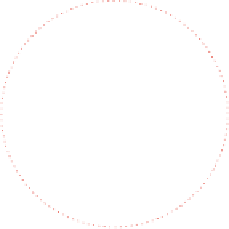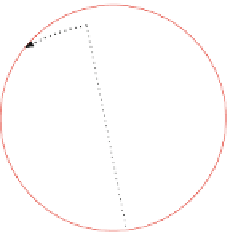Information Technology Reference
In-Depth Information
c
c
c
b
b
b
a
a
x
z
x
z
x
y
y
Fig. 25.
Fig. 26.
c
c
c
c
b
b
v
a
a
b
x
x
x
z
z
y
y
Fig. 27.
Fig. 28.
Alternatively, if the first bridge point (
b
) moves inside the first circle (see
Fig.
28
), we maintain feasibility of the transformed path by (continuously) replac-
ing the bridge point by the intersection point
v
of the first two circles. It is
straightforward to confirm that both
|
av
|
<
|
ab
|
|
vc
|
<
|
bc
|
. Thus, the rota-
tion can continue until
v
coincides with either
a
or
c
, at which point either
a
or
c
becomes a degenerate bridge, and we can continue in Case III, with one fewer
edge.
and
4 Existence and Uniqueness of
ς
-geodesics
Careful inspection of the proof of Lemma
4
shows that it applies even when
the first or third discrete circular arc is degenerate (i.e. arises from an endpoint
constraint), provided the second discrete circular arc spans at most a half circle.
Furthermore, if the second circular arc in some locally shortest path spans more
than a half circle, then if the first (or third) arc is degenerate, it must be the
case that the path starts (or ends) with an edge that (i) is an extension of


























































































Search WWH ::

Custom Search